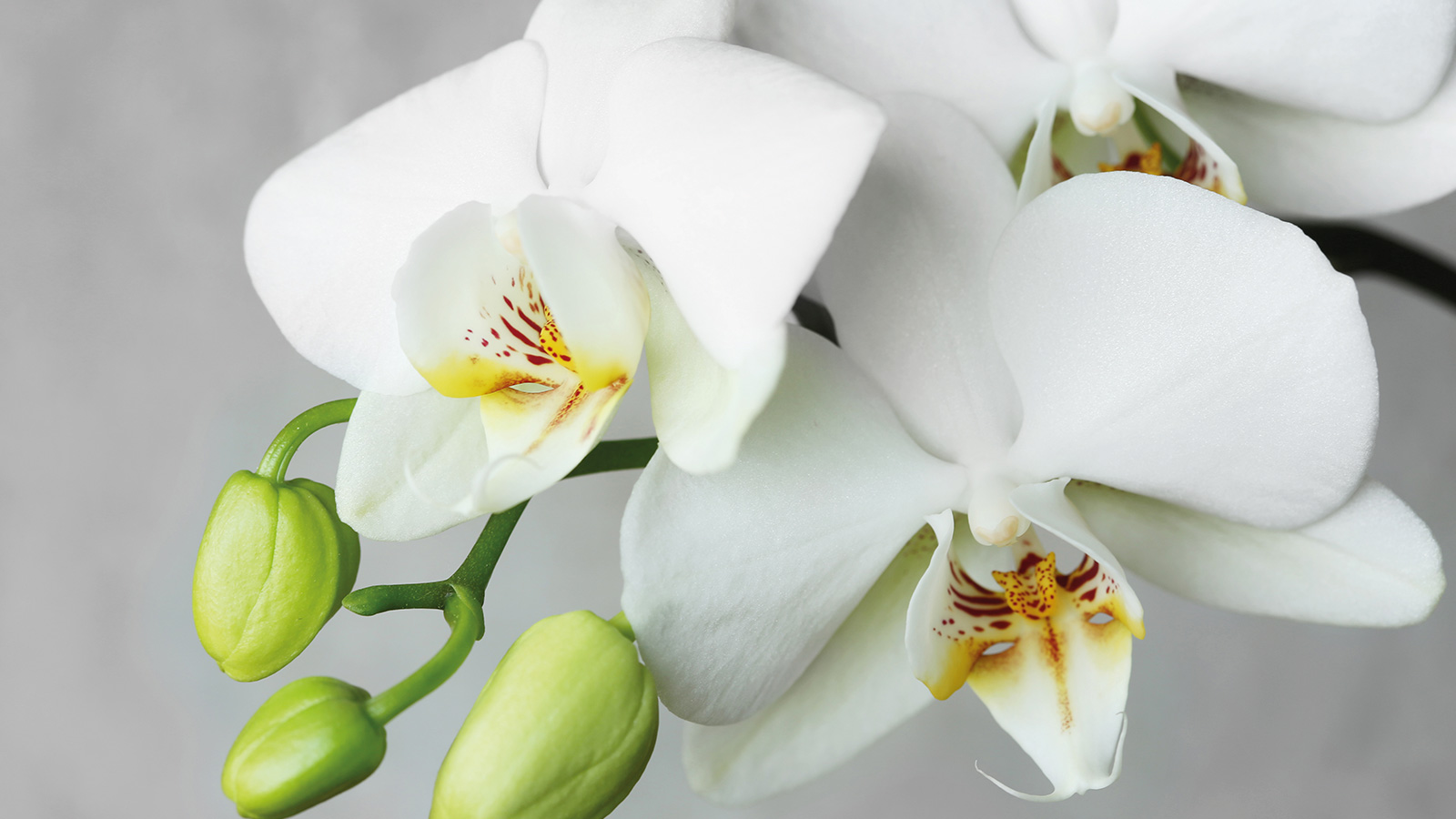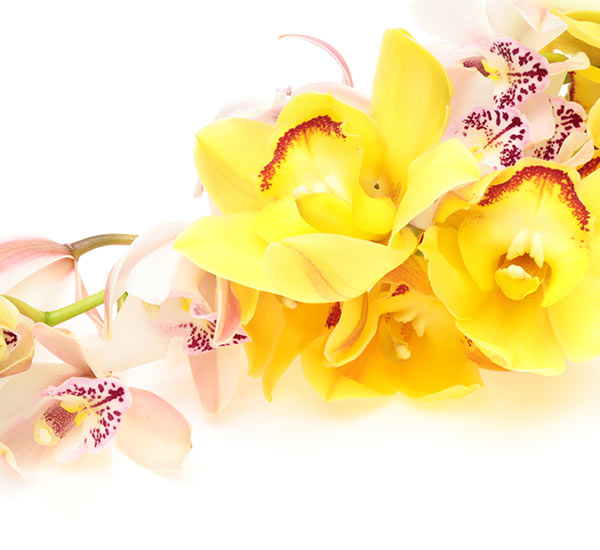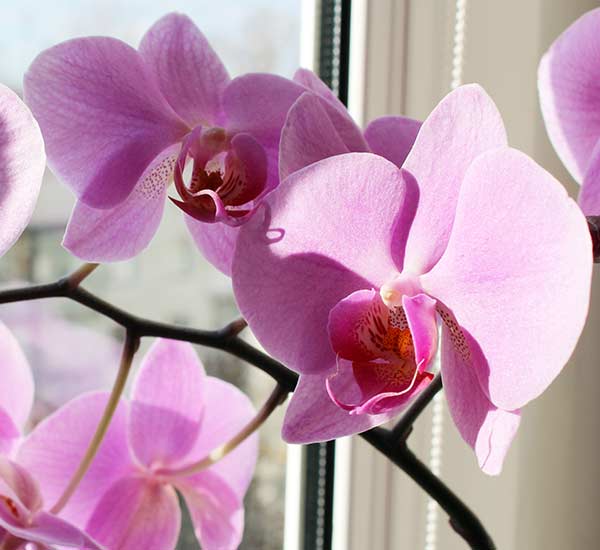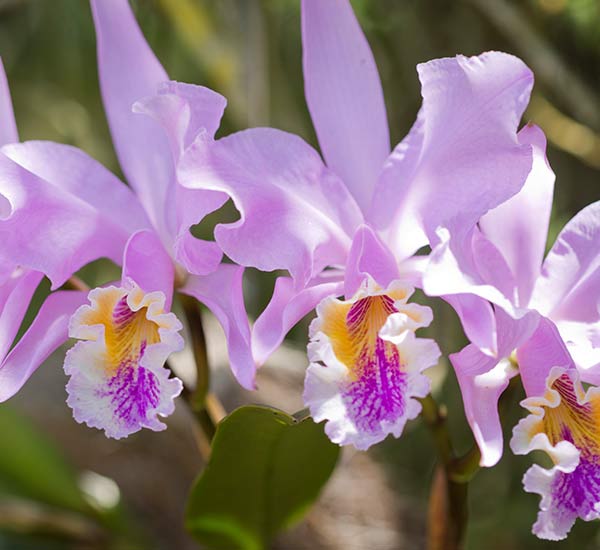Somewhere along the way, someone has given you a potted orchid as a gift, or you have attempted to grow them yourself from bulbs. How much success did you have? Probably none. Orchid care requires knowledge, research and some beginner orchid tips for beautiful results.
Here are the best three orchids to grow for beginners and all the orchid tips you need to grow them.
Quick orchid overview
- Orchids are amazing and have attracted attention for centuries.
- Orchids comprise about 10% of the world’s plants with some 25,000 to 35,000 species in 800+ genera.
- Most genera require particular growing conditions both in the wild and for the home grower.
Growing orchids is great for the body and mind. Once you get hooked you never stop learning – you will always want to grow and flower the plants better.
Expert orchid tip – one type at a time
Don’t start with too many different types of orchid genera as each usually requires different growing conditions and becomes a burden to look after.
In this article we recommend three orchids for you to grow and some tips on how to care for them.
Orchid 1: Cymbidium
Cymbidium orchids come from around the world and are easy to grow. They offer a variety of types, long flowering season and a huge range of colours. There are three types: standard, intermediate and the lovely new hanging pendulous types.
Cymbidium orchids have been described as the easiest orchid plants to grow in the Sydney and Central Coast area.
Orchid tips for growing Cymbidiums
- Cymbidiums are tree (epiphytes) dwellers
- pot them in a fairly open orchid mixture
- water the pot and watch for water escaping through the holes at the bottom of the pot make sure that your pot is off the ground to ensure that it can be flushed out. The orchid mixture should allow the water to flush through the bottom of the pot. Most commercially prepared orchid mixes are suitable.
Watering rules for your orchid to live by
- During the spring to autumn periods, regular watering is required (twice a week)
- It is preferable to water in the early morning or late evening
- Never ever water during the heat of the day
- These orchids are tree dwellers. They become unhappy if their roots become waterlogged.
Should I fertilise and what with?
Cymbidiums have three distinct cycles, growing, flowering and resting.
During growing (between spring and summer)
- apply a fertiliser once per week. Experts suggest Aquasol T or Nitrasol T
- follow the instructions on the bottle
- it is better to apply a weaker solution
Flowering period (between autumn and winter)
- Switch to a blossom booster type fertiliser to encourage the flowering process.
Resting period
- The time when Cymbidiums prefer to develop growth and not flowers.
Repotting
When you take a tree plant and cultivate it in a confined space, it will require repotting at least every two years after the flowering period.
Repotting can be either a time to divide the plant or move it into a larger pot. It is also the time to tidy up the plant – you can see how this can be done at the Mingara Orchid Fair and Show.
Watch out for pests!
Snails, grubs of the white butterfly and cabbage moth love Cymbidiums. These pests cause damage to the young buds of the flowers.
Orchid Tip: Sprinkle snail bait around your plants, especially after rain, as this is when these pests are most active.
Cabbage grubs can be eradicated with either a spray or cabbage dust.
Location, location, location
While it is the last tip for Cymbidiums, it is, in fact, the most important. Cymbidiums are sun lovers. They need a good location with plenty of sunlight and a nice breeze (great airflow).
Technically, most researchers suggest that the plant should be in an area where it receives at least six hours of sunlight a day. However direct sunlight in hot summer days should be avoided.
Indicators of too much sunshine are that the leaves will look yellowish. Shade-cloth coverage of 30% to 50% is ideal. Increase sun exposure throughout the Winter time Watch out for Jack Frost!
Frost can destroy young flower spikes. Consider some protection. A northeast brick wall or under a carport could also be considered.
Orchid 2: Phalaenopsis
Phalaenopsis, known as Moth Orchids are mainly native to tropical East-Asia. The Moth Orchids are one of the best orchids for growing in the home. They are a favourite with glasshouse growers, due to their long lasting showy flowers. You will need to follow the following tips particularly temperature, for success but they are very rewarding.
Location, location, location
- They grow easily place near a bright window, with little or no direct sun.
- North or east facing window providing bright indirect light is ideal.
- A shaded west window will work too.
- Artificial lighting is considered excellent; it is the norm to place four fluorescent tubes in one fixture. Each tube is placed 150 – 300mm over the leaves, 12 -16 hours a day, following natural day length.
Not too hot and not too cold
To promote growth, day temperatures for Phalaenopsis should range between 24-29°C for most of the year. Temperature constantly held above 22°C suppresses flower initiation, so night temperatures between 16 -18°C are desirable for several weeks in autumn, to initiate flower spikes.
Fluctuating temperatures can cause the buds to drop on plants with buds ready to open.
Don’t forget to bring them inside when temperatures are outside the recommended ranges.
Watering rules for your orchid to live by
- Phalaenopsis, unfortunately, have no significant water-storage organs other than their leaves so they should never completely dry out.
- Thoroughly water the plant and then don’t water again until nearly dry through the pot.
- During the heat of summer, plants may require water every second day.
- Watering is best done in the morning, avoiding the crown if possible, this assists the leaves and crown to dry by nightfall.
How’s the humidity?
- The recommended humidity is between 60% and 80%.
- Glasshouse: keep the floor moist, use misting to maintain humidity.
- At home, be sure to stand the plants over trays of gravel that have been partially filled with water. Ensure that the pots sit above the water. During dry weather make sure you mist the plants often.
- Grouping plants together help raise the humidity.
- When it is humid, try using a small fair to blow air away from the plants as it is important to have air moving around them.
Should I fertilise and what with?
Yes! Fertilise regularly. If the weather is warm and the plants are growing quickly make sure you fertilise.
- A rate of 500ppm (approx. 1 tsp to 10 litres) once a week is adequate.
- Fertilisers not high in nitrogen (NPK approx. 15:2:15) and with trace elements and higher calcium and magnesium are ideal, such as Peters Excel. Apply the fertiliser as part of your normal watering.
- As the temperature at night falls below 22°C, fertilising can be reduced to once a fortnight.
Why not speak to the nursery experts for orchid care advice and orchid tips at the Mingara Orchid Fair and Show?
Repotting
This is best done in the springtime or after flowering. Plant them in perlite, bark, sphagnum moss or a combination! Using bark? Instructions include ensuring you soak the bark overnight in a solution of pool algaecide before use. Plants in sphagnum moss should be replanted every year. Potting is usually done every 1-3 years.
Are your plants mature? Let them stay in their pot until the mixture begins to decompose. The roots will rot if it is left to get soggy.
Watch out for pests!
Mealy bug loves the Phalaenopsis. Keep inspecting to remove them. A spray with eco-oil will help control their numbers.
Slugs and snails have a passion for the new leaves and flower spikes.
Fungi and bacteria are a little harder to control, speak with your nursery or growers at the Mingara Orchid Fair and Show.
Orchid 3: Cattleya
How to set up your Cattleya
Always place a new plant somewhere that you can watch it for a few weeks. You can watch how it acclimatises to its new home. Water the plant thoroughly when you first receive it and place it in a bright, humid spot. Review the plants on a regular basis and keep an eye out for insects.
Orchid tips for growing Cattleya’s
- Cattleyas can be grown in plastic pots, clay pots, and wooden baskets or attached to some kind of slab.
- An ideal overall temp annually is a range between 7°C to 32°C.
- Have a 10°C drop between day and night? That is great!
- Conditions of good light, humidity and loads of water during growth are ideal.
- To avoid leaf burn in summer, some shade will be needed.
- Use less water when pseudobulbs become fully formed.
Watering rules for your orchid to live by
Frequently water during the growing period but consider that they do not like wet feet for an extended time.
Should I fertilise and what with?
Cattleya plants should be fed consistently, when in full growth. During the Spring through early Autumn, fertilising every seven days, with several clear watering’s in between, will make your Cattleya plants happy. Late Autumn through Winter they will enjoy a light feeding once a month.
Potting
Cattleya’s don’t mind repotting. Repotting should be undertaken whenever necessary. The best time is after all flowering has ceased. To minimise root damage, a warm water soak for 10 minutes, will make most roots very pliable and easier to remove from the container.
The best potting container for Cattleya plants is clay orchid pots. The plastic pots are second choice and considerably cheaper.
The potting medium must be well-drained, i.e. coarse bark, lava rock, river rocks, pieces of broken pottery, chunks of tree fern, hardwood charcoal, etc. so that the roots can be wet, but then dry quickly.
Location, location, location
Cattleyas grow best in medium light intensity. The morning sun up until midday is ideal. If you fail to protect them throughout the heat of the day, the flattened leaves will burn in full sun. If the foliage is lime green in colour, it is a good indication of proper light. If the foliage is dark green, the plant may not reach full blooming potential. Yellow coloured foliage indicates too much light.
Mingara Orchid Fair and Show is ideal to visit as you can see what the orchid’s flower looks like, talk to the best orchid growers, buy from the best orchid nurseries, get great advice and look at practical demonstrations.
Why not join Mingara Orchid Club for ongoing Orchid knowledge guidance and new friends.
Visit the Mingara Orchid Club Facebook page for more information.



